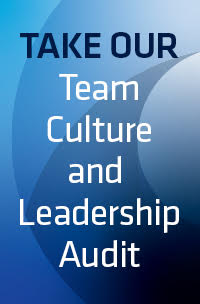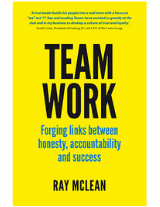The current and very public removal of Pippa Savage from the Australian Women’s quad skulls team has thrown up many compelling lessons regarding team work and leadership.
I would like to step back and look at the broader lessons for both corporate and sporting teams.
Suffice to say rowing would not have taken this action lightly. Clearly there was a high level of dysfunction within the team. This dysfunction was affecting performance.
My initial question to leaders in any organisation is:
“Do you have teams which are showing signs of dysfunction? If so, what is your strategy?”
It is worth remembering that happy/functional/productive teams have some very common elements BUT, unhappy/dysfunctional/unproductive teams often have unique circumstances that have seen them get to this point. Typically, the signs of trouble have also been ignored somewhat and leaders may have “hoped” that things would resolve themselves.
The first lesson for leaders is to acknowledge the effect that the “dynamics” (mood or culture) of a team plays on performance. At LTA we reinforce strongly the need to consider both the mechanics of the team (technical skills, strategies and KPIs etc) and the dynamics (mood/culture/behaviour).
It would seem that within the rowing team the 4 women were all technically expert. So the mechanics of the team does not seem to be the issue. However, the dynamics or mood of the team clearly was.
I have seen many teams in the corporate world who have been technically expert at their roles but because of their inability to function as a team you get lesser performance overall.
Two specific examples I have seen in the corporate arena was within a sales team where their best “sales person’, through selfish behaviour, caused dysfunction within the team. This translated into poorer overall performance. The second was an engineering team where the technically most expert engineer withheld information to create a power base for himself. Needless to say team performance was also affected. I have seen or worked with dysfunction in other fields as well.
So why do some organisations labour on, knowing/feeling the dysfunction but hoping that something might change. The answer is really about the level of urgency and importance placed on performance.
In the rowing example, the price of no action is failure to achieve a significant goal (Olympic Gold) both individually and as a team. I believe we miss significant opportunities for higher level performance in corporate teams by not endeavouring to build a greater sense of ownership of team goals.
I recently worked with a senior management team who were displaying a level of dysfunction and lethargy and so I asked them “If your house was mortgaged to this business would you have the same members on the team and would you be adopting the same strategies?” One team member, (without thinking) replied “Hell no”! This observation certainly made for useful discussion
Are there ways to increase the sense of ownership/buy in to teams?
Can you help a dysfunctional team (other than disbanding or restructuring them)
The answer is yes to both questions. Two simple (but courageous) steps are to invest time and effort into allowing the team to build a clear/agreed behavioural frame. They need to be able to (safely) acknowledge some of the dysfunctional behaviour and develop strategies to improve these behaviours. At the same time, they need to strengthen relationships within the team to the point where they are resilient enough to have the respectful/genuine/honest conversations with one another to deal with issues as they present.
So from a seemingly unrelated incident in rowing, we can take many lessons for our corporate/work teams.
Ray founded Leading Teams in 1992 after working as a leadership officer with the Air Force. He has published two books, ‘Any Given Team’ and ‘Team Work’. Ray is based in Geelong.
Learn more about Ray.



